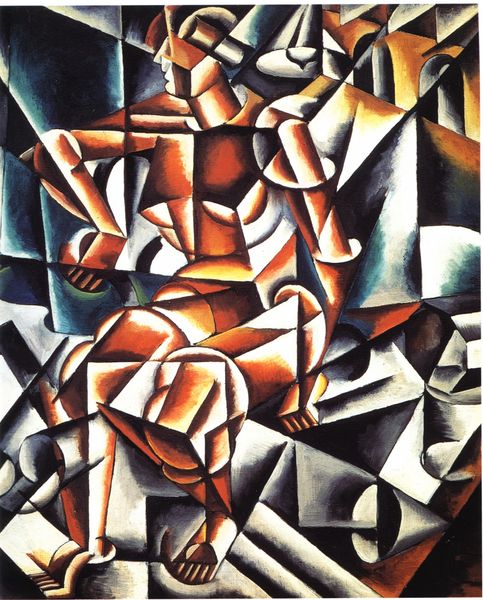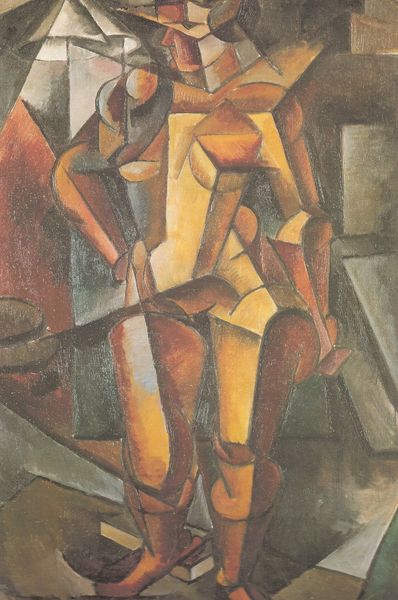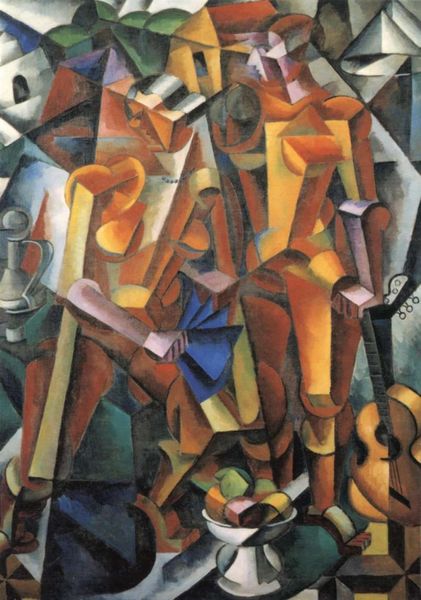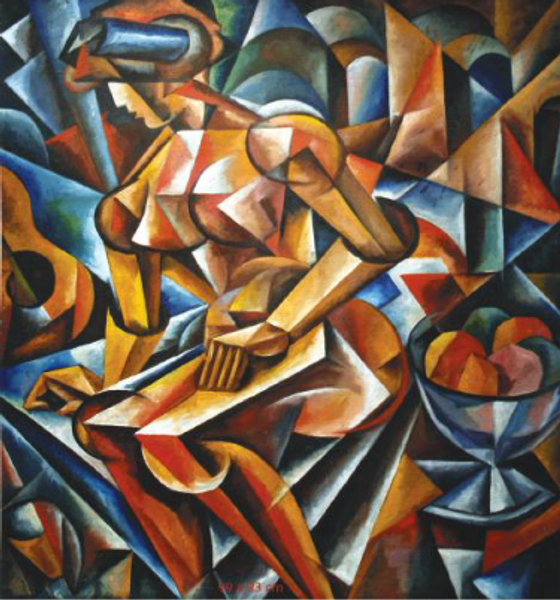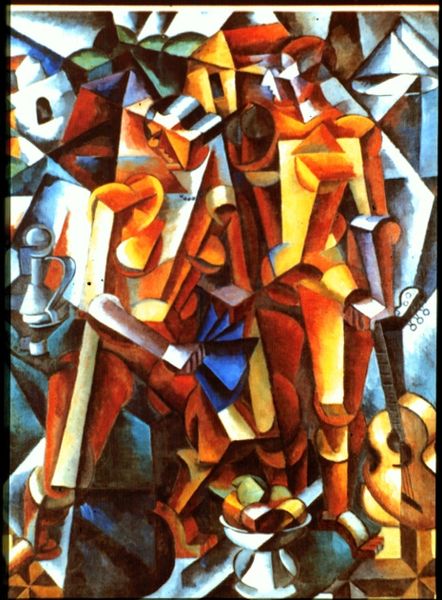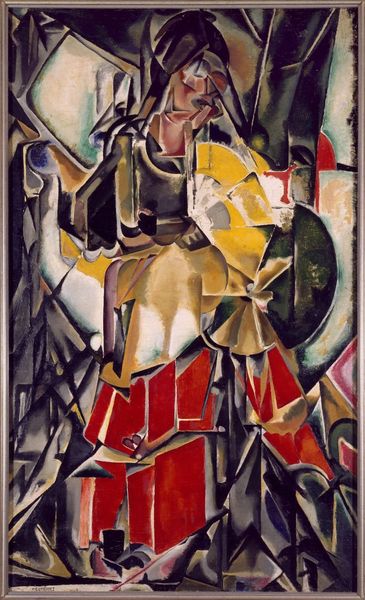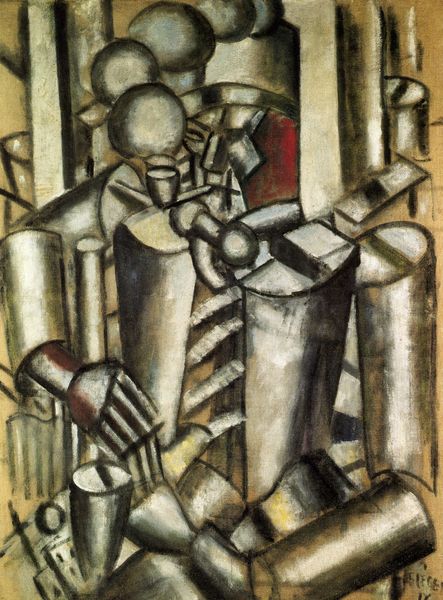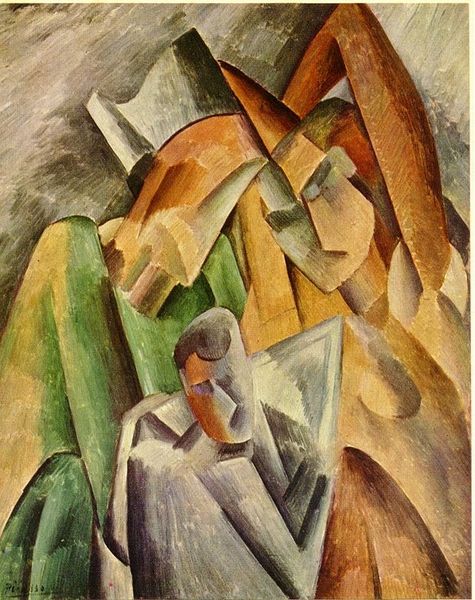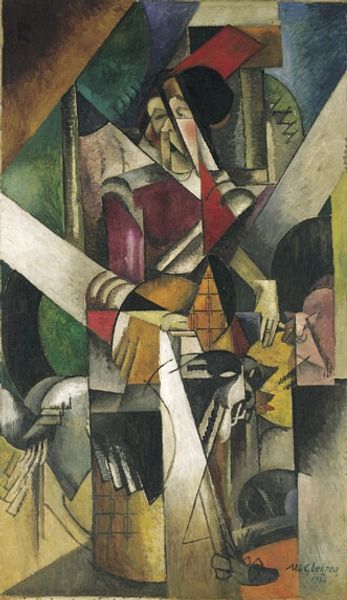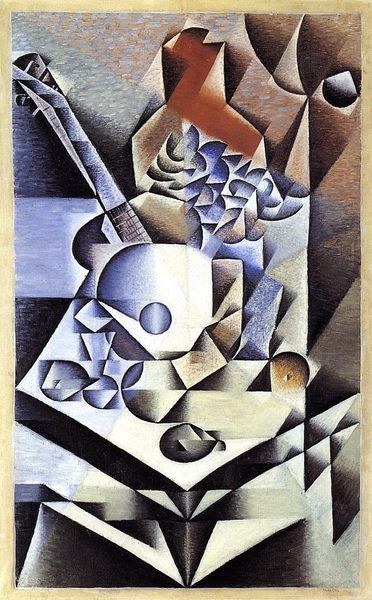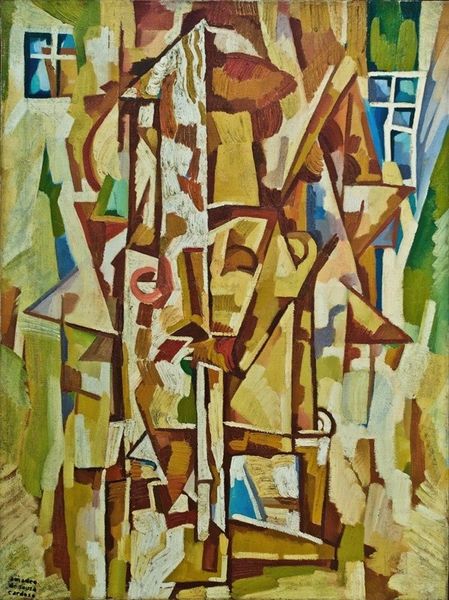
painting
#
portrait
#
cubism
#
abstract painting
#
painting
#
geometric-abstraction
#
modernism
Dimensions: 113 x 83 cm
Copyright: Public domain
Curator: Here we have Lyubov Popova’s "Figure Combing Her Hair", a painting showcasing her engagement with Cubist principles and her focus on geometric abstraction. Editor: Immediately, I’m struck by its dynamic sense of interiority. There’s something very private and intense about the subject even in this fragmented state. Curator: Absolutely, it’s less a portrait in the traditional sense and more of a study in form, a deconstruction of the human figure into dynamic shapes. We see this influence of Italian Futurism combining with her native Russian avant-garde ideals. Popova's work consistently engaged with the language of Cubism, emphasizing movement, dynamism and often incorporating architectural elements. Editor: It's fascinating how the act of combing hair, an everyday gesture, becomes an opportunity to explore spatial relationships. Are we meant to understand this moment as domestic commentary, a depiction of private life emerging from a tumultuous revolutionary context? Curator: Indeed, although domestic, this is not sentimental. The painting reflects the modern spirit and Popova’s push to synthesize traditional painting with avant-garde abstraction. Consider, too, how the palette—earthy browns, grays, and ochres with splashes of cool blues—grounds the piece, preventing the abstraction from becoming purely intellectual or detached. Editor: This controlled color palette almost adds to that intensity, wouldn't you agree? It suggests both intimacy and constraint, perhaps a visual manifestation of the push and pull between personal life and public duty that women especially might have faced in revolutionary Russia. Curator: That's insightful. It reveals a connection between the subject’s private actions and the socio-political moment in Russia. Her work, in that light, almost prefigures later developments in constructivism—art directly engaged in social utility. Editor: It's powerful to think about it as not just an aesthetic statement, but also a reflection of the modern experience of being. It seems almost a blueprint for a new way of seeing the world through fragmented identities. Curator: I concur, as Popova aimed to translate what she thought was truly the modern human being onto her canvas. The psychological impact resonates, still, beyond the canvas and the constraints of her cultural milieu.
Comments
No comments
Be the first to comment and join the conversation on the ultimate creative platform.
